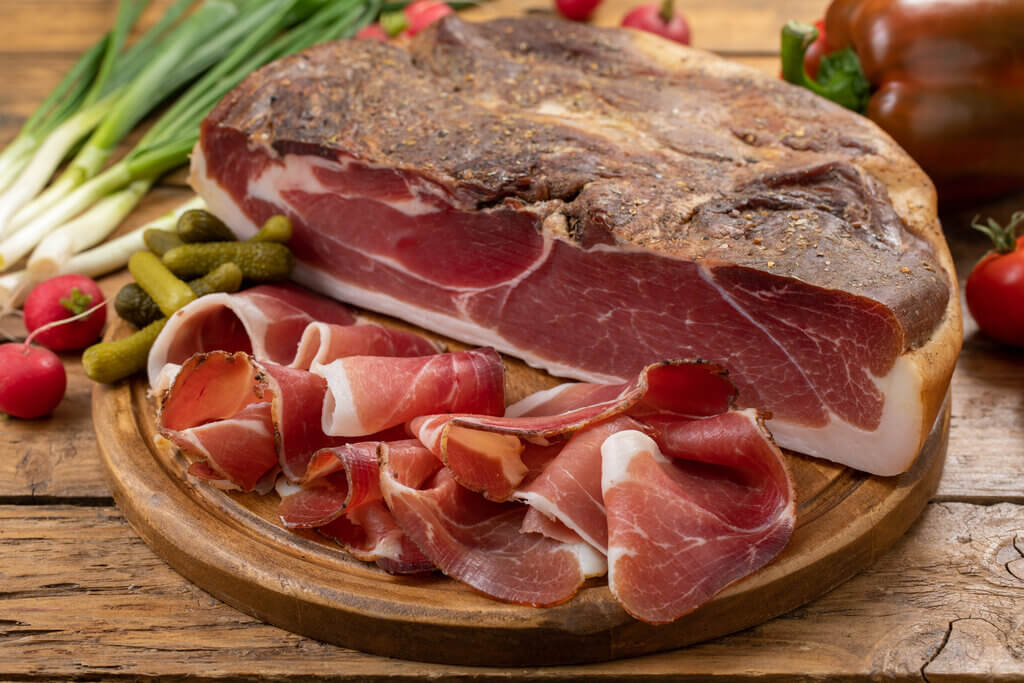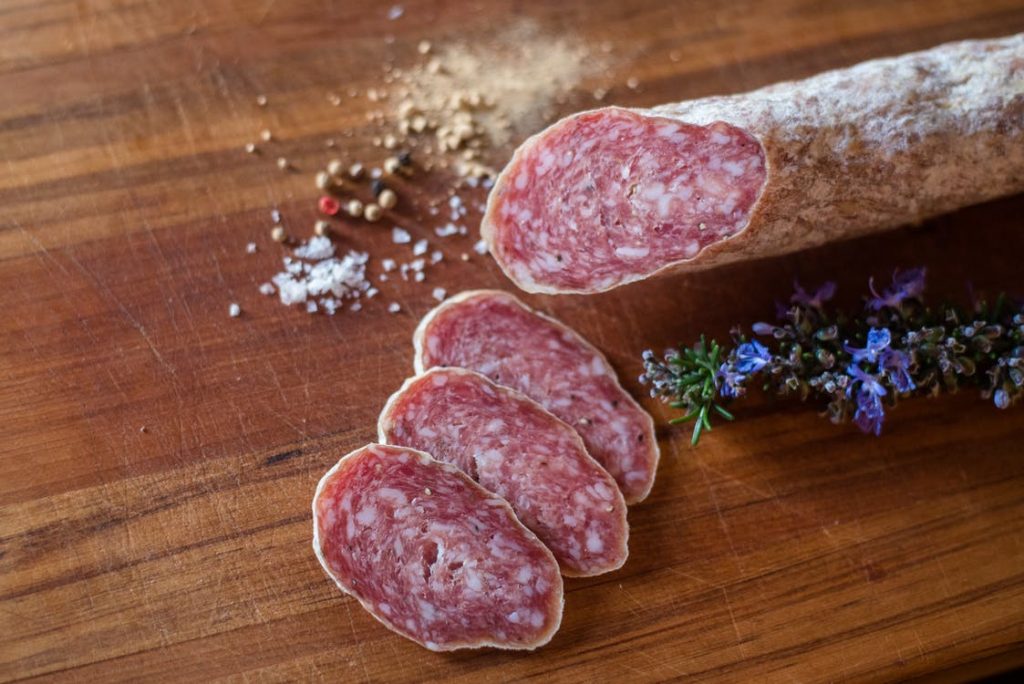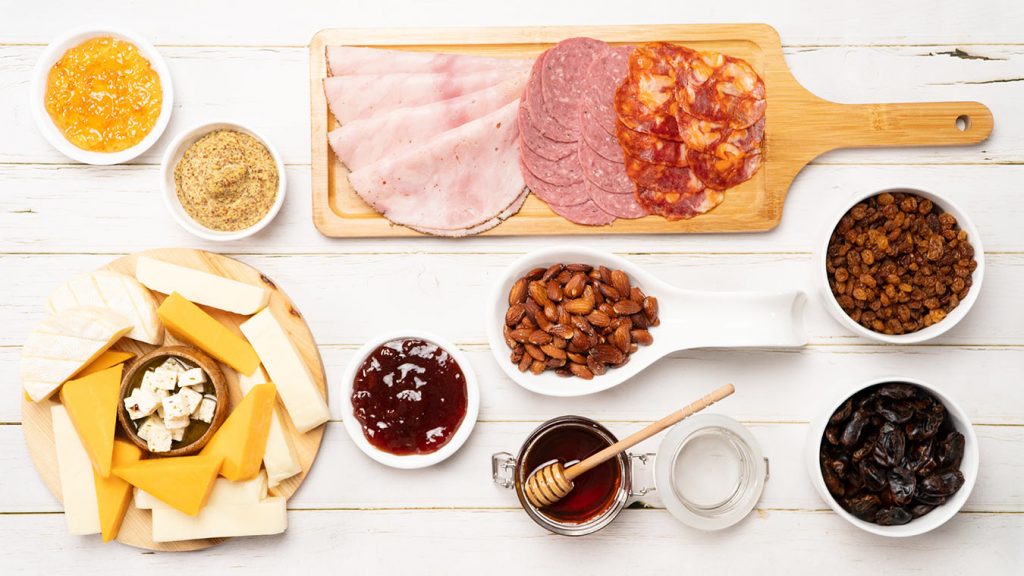
With the increasing popularity of charcuterie boards, it’s no longer surprising that people are doing all they can to get to know the food items found on them. Some of these morsels are cured meats such as prosciutto, salami, and mortadella. Aside from them, you’ll also spot capicola on most charcuterie boards. Often mistaken for prosciutto, this cured meat is nicely packed with flavors that pair nicely with your favorite foodstuff and wine.
However, with the number of cured meats available in the market today, it’s no surprise that you’ll have a hard time recognizing each one. But since pairing it nicely with other morsels is key to a good cheese board, it’s important to know your cured meats and how they taste like. Good thing we have all you need right here! Continue reading and discover what capicola is, how to make it, how it compares to prosciutto and salami, and finally some delicious recipes you can try.
What is Capicola?
A combination of the words capo which means “head” and collo that means “neck”, capicola is also called capocollo in Italy. Other variations that stem from the name capocollo include cappo and capicollo. But outside Italy, it’s popularly known as capicola and coppa. Among the Italian-American population in New York, it’s known as “gabagool. The latter is even referenced in the popular TV show The Sopranos, where the main character Tony Soprano referred to it as such. But what exactly is it?
To start, capicola is a traditional dry-cured meat made from the muscle that runs along the neck and shoulder of the pig. Officially named Coppa Piacentina and Coppa Calabrese after the Italian cities’ name, this cured meat originated in the Italian city of Piacenza and Calabria. Additionally, the European Union granted Protected Designation of Origin or PDO status for both variations of coppa.
Usually sliced very thin, you’ll often see capicola on Italian sandwiches like panini, muffuletta, and cold cuts sandwiches. It’s usually paired with either provolone, gruyere, or other types of cheeses.
READ ALSO: 23 Different Types of Cheese, Explained
Capicola vs Prosciutto
Capicola and prosciutto are two of the most popular types of salumi or cured meat. So some easily confuse them from the other. If you’re not familiar with these two, then there’s a great chance you did as well. Both are sliced thinly and used in the same dishes such as this flavor-packed ciabatta sandwich. Appearance-wise, they also resemble each other. Both have a brownish-red color with pronounced streaks of fat. Nevertheless, they do have distinctive characteristics that define them.

Again, capicola is made up of the muscle running along the neck and pork shoulder. Meanwhile, prosciutto is made from the hips and thighs of a pig. But unlike coppa, prosciutto is known for its notable salty flavor. It also has hints of sweetness and fragrant flavor that you might be familiar with. That is all thanks to the spices and seasonings, with each manufacturer having their own secret family recipe. However, some variations include black pepper, garlic, rosemary, and juniper berries. Coppa, on the other hand, is salty without being overwhelming. With just a little bit of heat compared to the latter, the flavors are significantly more delicate.
Capicola vs Salami

Salami, on the other hand, undergoes a sausage-like preparation with ground pork and seasonings. An authentic salami should contain curing salt, sugar, black pepper, and garlic stuffed in a hard casing made from animal intestine. The casing also greatly resembles that of coppa in terms of size and shape. Aside from these notable similarities and differences, both cold cuts also vary in flavor profile.
Salami has a slightly versatile and wide range of flavors depending on the spices you will use. But salami enthusiasts insist that a true salami should taste hot and tangy due to the fermentation process. That said, coppa does not undergo the same fermentation procedure. So naturally, that twang you love in a salami is absent.
READ ALSO: Genoa Salami vs Hard Salami: What’s the Difference?
How to Make Capicola
Being the relatively easier salume recipes out there, capicola is actually one of the perfect recipes to start if you’re new to the world of Italian cold cuts. Still, making it is no walk in the park. To make it close to the authentic one (albeit living outside Italy), you’ll need these key ingredients:
Ingredients:
- 3 ½ pork neck coppa
- 48 grams kosher salt
- 4 grams Instacure #2
- 3 grams Juniper berries
- 2 tablespoons black pepper
- 1 gram grated nutmeg
- 2 cloves minced garlic
- 3 sprigs of fresh thyme
- 2 bay leaves
- 1 tablespoon chipotle powder
- 1/4 cup chili powder
- 1/4 cup paprika
Steps:
- In a food processor, combine Instacure, juniper berries, kosher salt, black pepper, nutmeg, garlic, thyme, and bay leaves until well combined.
- Once combined, rub the mixture all over your pork neck coppa.
- Store in a ziplock bag. Use a vacuum sealer to rid the bag of air.
- Place the pork coppa in the refrigerator for 7 to 15 days. Remember to turn the meat every other day.
- Take the meat from the bag and gently rinse off some of the seasonings. Avoid over rinsing or you’ll strip the pork coppa off its flavor.
- In a bowl, mix chipotle, paprika, and chili. Then, rub the spice mix all over the coppa pork. Let it rest in the rack for a few minutes.
- Using meat netting, cover the pork coppa and place it in an Umai dry bag. Vacuum seal to discard bag with remaining air.
- Lastly, store in the refrigerator on a cooling rack for 6 to 10 weeks while turning the meat occasionally. A good coppa should have reduced meat by 35 to 40 percent.
READ ALSO: Authentic Italian Recipes That’ll Take You to Italy
Delicious Capicola Recipes to Try

Widely popular overseas, this cured meat is not only a delicious morsel for your charcuterie board but also a delicious sandwich filling, especially when accompanied by Italian favorites. Pair it with salami, olives, crackers, and other cheese types. So get yourself a headstart by trying these capicola recipes at home.
- Copycat Subway Cold Cut Combo — With stack after stack of the best cold cuts and cheeses, a sandwich has never been this good. Add coppa slices in the stack for some delicate, yet well-seasoned cold cut that gives a well-balanced flavor you’ll love.
- Antipasto Platter — Featuring various cold cut Italian delis that pair well with coppa, antipasto is possibly the best way to enjoy the depth and flavor of this cured meat. Antipasto is a forgiving recipe. So, you can include any cured meats and cheeses you like. If you don’t know where to start, try this recipe that makes a beautiful display of morsels for eight people.
- Muffaletta Sandwich — If snacking is not your cup of tea, maybe you can fancy yourself with some filling sandwich? You can try this recipe that combines the flavor of Italy and New Orleans in one delicious sandwich packed with mortadella, salami, and capicola.
Capicola is a Traditional Italian Cured Meat as Tasty as Prosciutto
Now that you know the incredible characteristics and flavors of this cured meat, now’s the time to try it with your cheese boards and cold-cut sandwiches. Although not as popular as prosciutto outside Italy, capicola meat is just as capable of bringing delicious snacks and party food trays to your dinner table. But there’s no harm if you want to try it on a regular day too!











